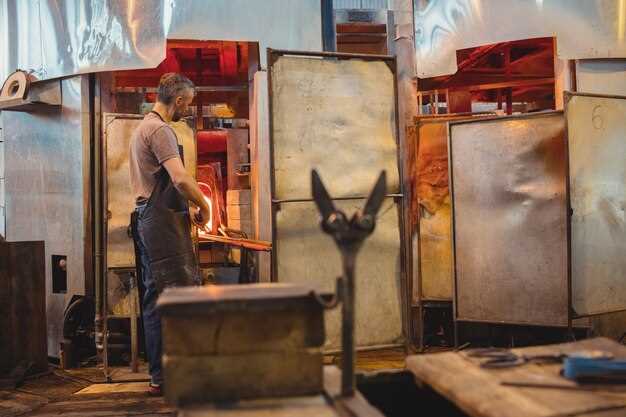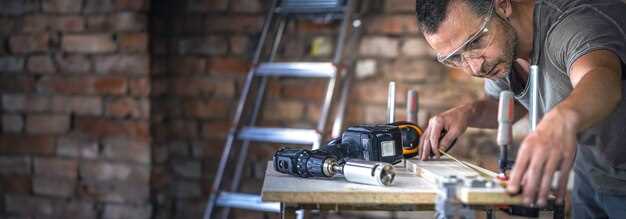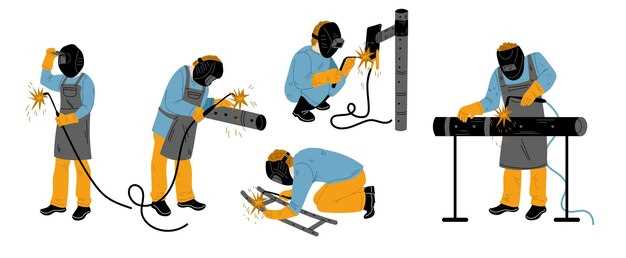
Repairing vehicle frames is a critical task that requires precise methods and expertise. Welding plays a pivotal role in ensuring that frames are restored to their original strength and durability. With various welding techniques available, each method has its unique advantages and applications, making it essential for repair professionals to choose the right approach based on the specific needs of the frame being repaired.
This article delves into the different welding techniques that are commonly used in frame repair. MIG welding, TIG welding, and stick welding are among the most prevalent methods, each bringing forth its own characteristics that can influence the outcome of the repair process. Understanding these techniques can greatly enhance the quality of the work and ensure long-lasting results.
Additionally, factors such as the type of metal being repaired, the thickness of the material, and the condition of the frame all play significant roles in selecting the appropriate welding technique. By focusing on effective frame repair strategies, we aim to equip technicians and DIY enthusiasts with the knowledge needed to make informed decisions, ultimately leading to safer and more reliable vehicles on the road.
Choosing the Right Welding Method for Frame Materials

When repairing frames, selecting the appropriate welding method is crucial to ensure structural integrity and durability. Different materials require specific welding techniques to achieve optimal results. This section will discuss the most common types of frame materials and the corresponding welding methods ideal for each.
Steel frames, commonly used in automotive and construction applications, can be effectively repaired using methods such as MIG (Metal Inert Gas) welding or TIG (Tungsten Inert Gas) welding. MIG welding is favored for its speed and ease of use, making it suitable for thin materials and large areas. In contrast, TIG welding provides greater control and produces cleaner welds, making it ideal for more delicate or intricate repairs is necessary.
Aluminum frames, often found in bicycles and aircraft, require specialized techniques due to aluminum’s unique properties. TIG welding is generally preferred for aluminum because it allows for precise heat control, minimizing the risk of warping and distortion. Alternatively, if speed is a priority and the thickness of the material permits, MIG welding with an appropriate filler material can also be used, although it may not produce as clean a finish as TIG.
For composite materials, which are increasingly popular in modern frame construction, traditional welding methods may not be suitable. Instead, adhesive bonding or mechanical fasteners are typically employed. However, if composite materials have metal components, hybrid techniques that combine welding with adhesives may offer effective repair solutions while maintaining the integrity of the frame.
In summary, the key to successful frame repair lies in properly assessing the material at hand. Steel benefits from MIG or TIG welding, aluminum requires TIG for the best results, and composite materials often necessitate alternative bonding methods. Understanding these distinctions ensures that repairs enhance the performance and longevity of the frame.
Best Practices for Preparing Frame Surfaces Before Welding
Preparing frame surfaces is a critical step in the welding process that directly impacts the quality and strength of the final weld. Proper preparation ensures good fusion between the metal surfaces and minimizes the risk of defects. Here are the best practices to follow:
1. Clean the Surface
Remove any dirt, grease, rust, and old paint from the area to be welded. Use a wire brush, grinder, or chemical cleaners to achieve a clean surface. Contaminants can weaken the weld and lead to potential failures.
2. Inspect the Material
Before welding, inspect the frame for any pre-existing cracks, holes, or defects. Identifying these issues early allows for proper repairs and ensures the integrity of the weld. If necessary, use a magnifying glass or ultrasonic testing for better accuracy.
3. Prepare the Edges
For optimal penetration and bonding, bevel the edges of the surfaces to be joined. This is particularly important for thicker materials. Create a bevel that allows for full penetration of the weld metal, which enhances strength and durability.
4. Align the Pieces
Ensure that the frame components are properly aligned and secured. Misalignment can cause stress concentrations and weaken the structure post-welding. Use clamps or fixtures to hold the pieces in the correct position.
5. Preheat the Material
In some cases, preheating the base material can reduce the risk of cracking and improve the quality of the weld. This is especially important for high-carbon steels or thick materials. Follow manufacturer guidelines for appropriate temperatures.
6. Control Environmental Factors
Welding in adverse conditions such as cold drafts or humidity can affect the weld quality. Take measures to minimize these influences, such as working in a controlled environment or using windbreaks.
By adhering to these best practices for surface preparation, welders can significantly enhance the effectiveness of their frame repair efforts, leading to stronger and more reliable welds.
Inspection and Testing Methods for Welded Frame Repairs

Ensuring the integrity and quality of welded frame repairs is critical for the safety and performance of structures. Various inspection and testing methods are employed to evaluate the quality of welds and to identify any potential defects. Below are the most commonly used methods:
- Visual Inspection
This is the most basic yet essential method. Trained inspectors examine welds for surface defects such as cracks, overlap, undercut, and improper bead appearance. Tools such as magnifying glasses or borescopes may be used for enhanced visibility.
- Ultrasonic Testing (UT)
UT uses high-frequency sound waves to detect internal flaws in the welds. A transducer sends sound waves into the weld, and any discontinuities will reflect these waves, providing a clear indication of weld integrity.
- X-Ray Inspection
X-ray testing is employed to identify internal defects such as porosity or inclusions by capturing an image of the welded area on film or digital media. This method is highly effective but requires specialized equipment and skilled personnel.
- Magnetic Particle Testing (MT)
This technique involves applying a magnetic field to the weld area and then sprinkling ferromagnetic particles on its surface. Any surface or near-surface defects will disrupt the magnetic field, causing the particles to accumulate and forming a visible indication.
- Dye Penetrant Testing (PT)
This non-destructive test involves applying a liquid penetrant to the weld surface. After a certain dwell time, the excess penetrant is removed, and a developer is applied. Any surface defects will absorb the penetrant, becoming visible against the developer background.
- Bend Test
Bend tests are performed by cutting a sample piece of the welded material and bending it to assess the ductility and strength of the weld. This method allows for the assessment of weld quality and performance under stress.
- Tensile Testing
This method involves applying tensile force to a welded sample until it fails. The results provide quantitative data regarding the strength and ductility of the welded joint, allowing for a thorough assessment of performance requirements.
Using a combination of these inspection and testing methods ensures comprehensive evaluation of welded frame repairs. Proper selection of methods based on the specific application and environment is crucial to maintaining safety and reliability. Regular inspections and testing help in identifying issues early, preventing failures, and extending the lifespan of welded structures.

